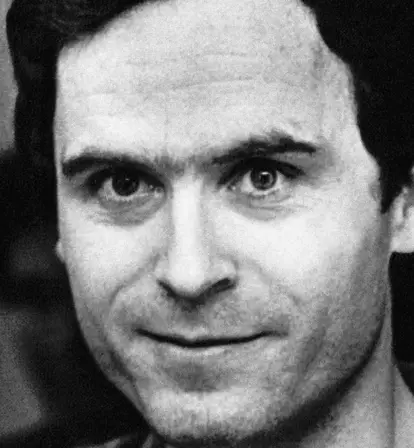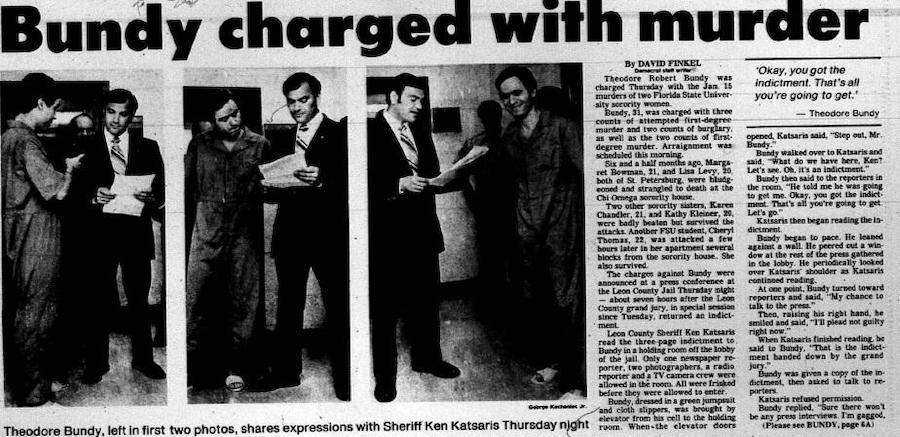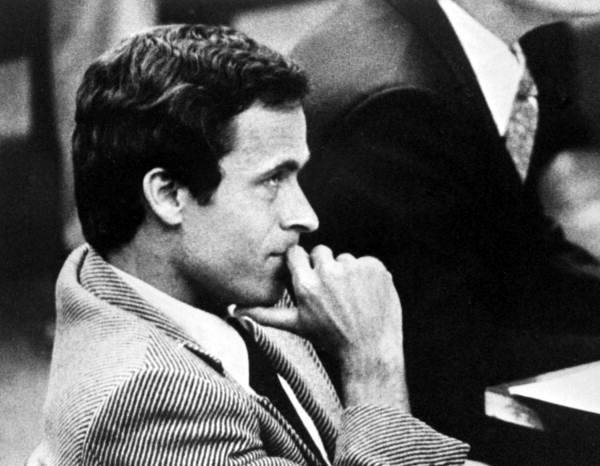What Were Ted Bundy's Last Words

The Inside Story Of Ted Bundy's Execution, Last Meal, And Final Words
At Florida State Prison on January 24, 1989, Ted Bundy's execution brought an end to the life of America's most notorious serial killer.
The life and crimes of notorious serial killer Ted Bundy were most recently chronicled in Netflix's Extremely Wicked, Shockingly Evil and Vile. While the movie mainly explored Bundy's relationship with former girlfriend Elizabeth Kloepfer, his last days were largely glossed over.
The film furthermore took some notable liberties with the facts, none heftier than Kloepfer visiting Bundy in Florida State Prison days before his execution and finally learning the truth about her ex.
According to Oxygen, that emotional catharsis happened quite differently: years earlier and over the phone.
So how did Ted Bundy die and what did his last days actually look like?
Ted Bundy's death and execution were famously a national event for onlookers outside the prison gates and millions of viewers watching from home. "Burn, Bundy, burn!" adorned protest signs and comprised the chants of hundreds, according to Esquire.

Bettmann/Getty Images FSU's Chi Phi fraternity celebrates the execution of Ted Bundy with a large banner that says, "Watch Ted Fry, See Ted Die!" as they prepare for an evening cookout where they will serve "Bundy burgers" and "electrified hot dogs."
The whole world was watching, eager to bear witness to Ted Bundy's death. For a man who brutally killed at least 30 human beings in the 1970s — one of them 12-year-old Kimberly Leach — the desire was certainly understandable, in some respects.
Ted Bundy's relationships with Kloepfer and wife Carole Ann Boone, his grisly murders, and his heavily televised trial have all been thoroughly explored. Meanwhile, these aspects have drawn attention away from arguably the most important death in this whole saga — his own. So, how did Ted Bundy die?
How Ted Bundy Got Caught
The Netflix film was based on Elizabeth Kloepfer's own memoir, The Phantom Prince: My Life With Ted Bundy (published under the pseudonym Elizabeth Kendall), and ends shortly before his 1989 execution.
In the film, he admits his deeds when she visits him in prison. In reality, it happened over the phone.
"The force would just consume me," he told her. "Like one night, I was walking by the campus and I followed this sorority girl. I didn't want to follow her. I didn't do anything but follow her and that's how it was. I'd be out late at night and follow people like that…I'd try not to, but I'd do it anyway."
Those activities soon led to a multi-year murder spree across several states but Bundy nevertheless managed to evade justice numerous times, including his successful Colorado jailbreak and subsequent escape to Florida in 1977 (that was his second escape that year — he'd previously jumped out of a courthouse window and wasn't caught for four days).

Bettmann/Getty Images Nita Neary goes over a diagram of the Chi Omega sorority house in the Ted Bundy murder trial, 1979.
It was Bundy's time in Florida that arguably put the final nail in the proverbial coffin. According to ABC News, there was only one other victim after the Florida State University murders at the Chi Omega sorority house on Jan. 15, 1978.
About three weeks after terrorizing the Tallahassee campus, Bundy kidnapped 12-year-old Kimberly Leach from her school in Lake City, Florida. He killed the girl and dumped her body in Suwannee State Park.
In February 1978, he was finally caught by a Pensacola police officer who found Bundy's car slightly too suspicious to dismiss. Not only did the car have stolen plates, but Bundy provided the officer with a stolen driver's license. After years of killing, Ted Bundy was finally caught.

Bettmann/Getty Images Ted Bundy on the third day of jury selection at the Orlando trial for the murder of 12-year-old Kimberly Leach, 1980.
He admitted to his real identity after two days in custody, which had detectives curious if he was responsible for the deaths of Chi Omega sorority sisters Margaret Bowman and Lisa Levy, as well as the attacks on two of their sorority sister peers.
This was the beginning of the end for Ted Bundy. The man who had been on the FBI's 10 Most Wanted list and who had been hunted by law enforcement for questioning in more than 30 killings was now under arrest.
He was charged with two counts of first-degree murder and three counts of attempted murder.
When he called Kloepfer shortly after his Florida arrest, he was in tears. According to her memoir, he was desperate to take "responsibility" for his actions. When he admitted his violent deeds to his former lover, she replied by saying "I love you." She wasn't sure how else to respond.
"I tried to suppress it," he told her. "It was taking more and more of my time. That's why I didn't do well in school. My time was being used trying to make my life look normal. But I wasn't normal."
A Monster Goes To Trial
Reporters discovered that Ted Bundy had been living at the Oaks apartment complex — an affordable residence blocks away from the Chi Omega sorority. A documented report of one of its members, Nita Neary, seeing a man walk down the stairs that night was used during Bundy's trial.
"She was able to give a good, strong description," said lead prosecutor Larry Simpson. "Nita Neary did meet with an artist and drew a sketch of the person that she saw leaving the Chi Omega house… it looked like Mr. Bundy."

Tallahassee Democrat/WFSU Public Media A newspaper clipping detailing Ted Bundy's murder charges for the Chi Omega sorority murders, 1978.
It wasn't merely a passing similarity based on eyewitness reports that swayed the trial in the prosecution's favor. Bundy's hair matched fibers found in a pantyhose mask, for instance. The infamous bite mark left on Lisa Levy — a pivotal scene in the Netflix movie — was also strong evidence against the killer.
"I think the bite mark, itself, is indicative of the primal rage that Mr. Bundy must've been in at the time that he committed those murders," said Simpson. "It was just a total homicidal rage."

Wikimedia Commons Ted Bundy in court in Florida, 1979.
"I thought a lot about the parents of the girls that were killed during the prosecution of this case," said Simpson. "It's one of the things that kept me going."
On July 24, 1979, the seemingly charming law student was convicted and sentenced to death for the murders of Bowman and Levy, as well as the attempted murders of Chandler, Kleiner, and Thomas.
In Jan. 1980, Bundy stood trial in Orlando, where he was convicted and sentenced to death for the kidnapping and murder of Kimberly Leach. The evidence presented in court included eyewitness testimony, fibers, and hotel receipts from Lake City.
Like many death row inmates across the United States, Ted Bundy spent years in prison before his inevitable execution. After nine years in Florida State Prison, on Jan. 24, 1989, Ted Bundy was put to death by the state.
Ted Bundy's Execution
Bundy eventually exhausted his appeals and the final convictions ultimately convinced him to confess. Though he admitted to a staggering 30 murders, experts still believe the body count was higher.
Nonetheless, the time had come — but not before his last meal, and a citizens' celebratory tailgating event outside the prison walls.
On his last night alive, Ted Bundy called his mother twice. As hundreds set up camp outside to drink beer, howl chants for the killer to burn, and bang pans together in a feverish hurrah, it was time for his last meal.
Seemingly unenthused about dinner, Bundy refused to pick something and was given the standard concoction — steak, eggs, hash browns, and toast. With nerves and anxiety likely coursing through his body, he didn't even pick at it. Bundy died hungry.
Ted Bundy's final interview.
How Did Ted Bundy Die?
In addition to the frenzied mob outside, the main event inside Florida State Prison was nearly equally well-attended. According to the LA Times, reporting from inside, 42 witnesses came to watch Ted Bundy's death. The Times covered the killer's last breaths and left behind a detailed answer to the question of how did Ted Bundy die:
"Supt. Tom Barton asked Bundy if he had any last words. The killer hesitated. His voice quavered."
"'I'd like to give my love to my family and friends,' he said. … With that, it was time. A last thick strap was pulled across Bundy's mouth and chin. The metal skullcap was bolted in place, it's heavy black veil falling in front of the condemned man's face."
"Barton gave the go-ahead. An anonymous executioner pushed the button. Two thousand volts surged through the wires. Bundy's body tensed and his hands tightened into a clench. A tiny puff of smoke lifted from his right leg."
"A minute later, the machine was turned off, and Bundy went limp. A paramedic opened the blue shirt and listened for a heartbeat. A second doctor aimed a light into his eyes. At 7:16 a.m., Theodore Robert Bundy — one of the most active killers of all time — was pronounced dead."
Ted Bundy's Death And Legacy
After Ted Bundy's execution, his brain was removed in the name of science. In the hopes that any glaring abnormalities could be found that indicated what caused such violent behavior, researchers examined the organ thoroughly.
Injuries to the brain have, indeed, been found by some researchers to cause criminality. In Bundy's case, no such evidence was discovered. The lack of any understandable reason and physical causes has certainly made the man's legacy of rampant rape, murder, and necrophilia all the more horrific.
A Fox news report on Ted Bundy's execution.
Ted Bundy essentially represents the invisible psychopath. Were it not for a few mistakes caused by his bloody passions, and a few lucky breaks on behalf of the law — Bundy may have well continued to be a charming law student by day and a horror movie monster by night.
In the end, his body was cremated, and his ashes scattered in Washington's Cascade Mountains as he requested. The Cascades are the very same mountain range Bundy used to dump at least four of his murder victims.
Since then, Bundy has been the inspiration for countless horror films, true crime books, and documentaries. Decades later, humanity is still collectively trying to understand how a seemingly normal, handsome man with a decent upbringing could've been so violent, gruesome, and indifferent.
After discovering the answer to the question of how did Ted Bundy die, read about his daughter, Rose Bundy. Then, learn how Ted Bundy helped catch Gary Ridgway, perhaps America's worst serial killer.
What Were Ted Bundy's Last Words
Source: https://allthatsinteresting.com/ted-bundy-execution